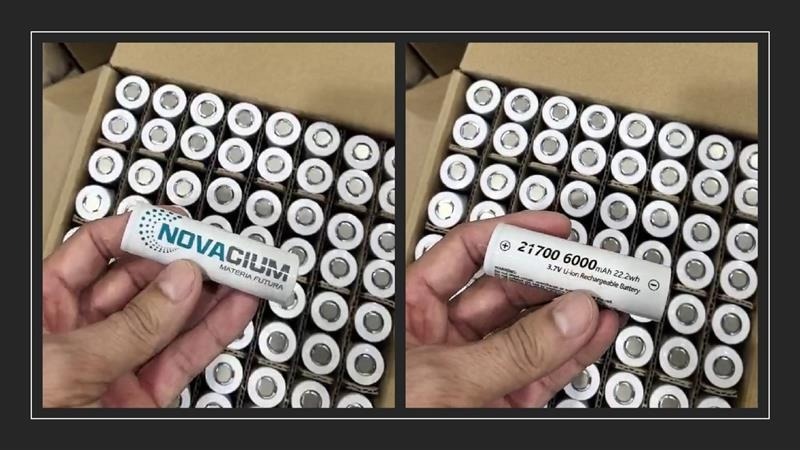Reviewed by Lexie CornerJun 20 2025
HPQ Silicon Inc., a company focused on advanced materials and process development, announced that its French technology partner, Novacium SAS, has started industrial production of cylindrical lithium-ion battery cells. These cells use Novacium’s third-generation silicon-based anode material (GEN3).
 First batches of cylindrical Novacium cells in the 18650 and 21700 formats. Image Credit: HPQ Silicon Inc.
First batches of cylindrical Novacium cells in the 18650 and 21700 formats. Image Credit: HPQ Silicon Inc.
Previous announcements, made on July 30, 2024, and March 19, 2025, highlighted the strong performance of 18650 cells made with the GEN3 anode. Since then, Novacium has attracted attention from major companies in the energy sector. The cells, with a 4,000 mAh capacity and 1,000 charge cycles, are well-suited for consumer electronics, telecommunications, mobility, and defense applications.
To meet growing interest, Novacium has decided to accelerate the industrial rollout of its technology through large-scale production.
This strategic acceleration is a response to the strong market interest. Our objective is to deliver the first commercial units and begin formalizing partnerships before the end of Q3 2025.
Dr. Jed Kraiem, Ph.D., Chief Operating Officer, Novacium
Novacium worked with a major industrial partner to quickly integrate the GEN3 silicon-based anode into an existing manufacturing line. The process went smoothly and outperformed initial expectations. This early success highlights a key advantage of the GEN3 technology - its ability to work with current production equipment.
The first industrial batches produced cylindrical cells in both 18650 and 21700 formats. These cells have capacities of 4,000 mAh and 6,000 mAh, respectively. Their performance is among the highest available today and matches earlier lab-scale results.
This progress was made possible by partnering with a manufacturer that already produces tens of millions of cells each year. With this foundation, Novacium is in a strong position to expand quickly and reach large-scale commercial production in the near future.
“The outstanding performance of these new commercial cells validates not only our technology but also our agile and opportunistic industrial strategy. We have moved beyond the laboratory - we are now delivering market-ready cells for evaluation and adoption by partners and future customers,” added Dr. Kraiem.
This step also supports revenue generation, attracts new investment opportunities, and positions HPQ - the only North American licensee of GEN3 technology - for local production. HPQ plans to begin manufacturing in Canada to help meet the growing demand for batteries across the continent.
This rapid launch confirms that our partnership with Novacium - and our broader commercial vision - is delivering tangible, market-ready results. We are not here to follow the market - we are here to help shape it.
Bernard Tourillon, Chief Executive Officer, HPQ Silicon Inc. and Novacium SAS
“With our exclusive North American license and the significant technical progress made by Novacium, HPQ is strategically positioned to benefit from technology transfer, meet growing demand, generate revenues before year-end, and lay the groundwork for high-value local production. This marks a pivotal milestone in the monetization of our technology portfolio,” added Mr. Tourillon.
The launch shows that HPQ and Novacium can move quickly from research and development to industrial production. This ability offers a practical advantage in the global push for electrification and improved energy storage technologies.